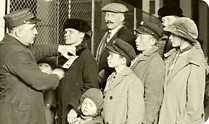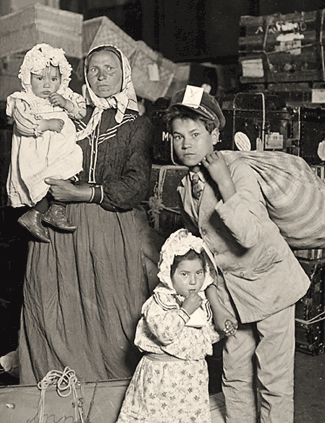
Becoming American:
Immigration and Assimilation in Late 19th Century America
Tuesday, August 16, 2011 | 10:00–11:30 a.m. (EST)

Leader
Professor emeritus of History
and of Spanish and Portuguese
Northwestern University
About the Seminar
The history of immigration thrusts several questions forward. First, where does migration begin? As its geographical settings changed, so did migration. In the case of this seminar, the places of origin will be eastern and southern Europe. Second, when does migration arise? Even though migrations copied from one another, immigrants developed movements that responded to the challenges of specific times. Our session’s focus is the late nineteenth and early twentieth centuries. Third, what did immigration change? This last question will run through our seminar.
Presentation (PDF)
Online Evaluation
Seminar Recording
Download Recording (You will need to install the WebEx ARF player, available at download, to play back the recording.)

Enter Moodle Forum
Assigned Readings
To incorporate seminar texts into your teaching, we offer the National Humanities Center’s Primary Document Application Form.- A manifesto to preserve Anglo-America: The Old World in the New: The Significance of Past and Present Immigration to the American People, by Edward A. Ross
- A plea for pluralism: “Democracy versus the Melting Pot,” by Horace A. Kallen, The Nation
- Immigrants reshape mining: Anthracite Coal Communities, by Peter Roberts
- Immigrants make a new labor force: Our Slavic Fellow Citizens, by Emily Greene Balch
- Immigrant women in clothing manufacture: Women in Industry: A Study in American Economic History, Edith Abbott
- Immigrants make a steel industry: The Steel Strike of 1919, Interchurch World Movement
- Unemployment in the early twentieth century: Poverty, by Robert Hunter
- Immigrant households in a steel city: Homestead: The Households of a Mill Town, by Margaret F. Byington
- Immigrants in dangerous working conditions: Work-accidents and the Law, by Crystal Eastman
- Immigrant children at work and school: Truancy and Non-attendance in the Chicago Schools, by Edith Abbott and Sophonisba P. Breckinridge
- The drive to acquire property: New Homes for Old, by Sophonisba P. Breckinridge
- Religious diversity in the immigrant city: “The Bohemian People in Chicago,” Hull House Maps and Papers, by Josefa Humpal Zeman
- What did immigrants read?: Anthracite Coal Communities, by Peter Roberts
- A massive immigrant press: The Immigrant Press and Its Control, by Robert Park
- Immigrant theater and city life: The Spirit of the Ghetto: Studies of the Jewish Quarter in New York, by Hutchins Hapgood
- Learning English, preserving native languages: The New Immigration, by Peter Roberts
- Images from Chicago, Illinois, c.1910
